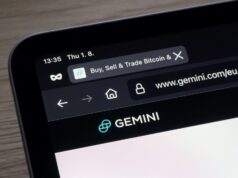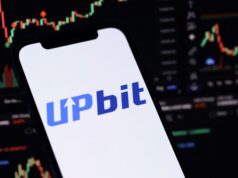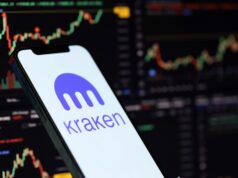On March 1, 2025, the cryptocurrency market is set for a major event. 11.2 million Solana (SOL) tokens, valued at over $2 billion, will be unlocked as part of the FTX bankruptcy estate’s liquidation. This release represents 2.2% of Solana’s circulating supply, fueling concerns about increased selling pressure and potential price volatility.
However, the situation is not purely bearish. Institutional players such as Galaxy Digital and Pantera Capital have previously acquired large portions of FTX’s SOL holdings at auction, signaling potential confidence in Solana’s long-term viability. This raises an important question: will this token unlock trigger a market-wide sell-off, or does institutional interest suggest a more controlled redistribution of assets?
The Background: How FTX’s Solana Holdings Came to Market
FTX, once a leading crypto exchange, held a significant amount of Solana before its collapse in November 2022. As part of its bankruptcy proceedings, FTX’s administrators have sought to liquidate assets to repay creditors, including vast amounts of locked SOL tokens.
Rather than releasing all holdings at once, FTX conducted structured auctions throughout 2024. That allowed major institutional investors to acquire large quantities of SOL at discounted rates. Galaxy Digital, Pantera Capital, and Figure were among the most notable buyers. They secured SOL at prices reportedly ranging from $64 to $102 per token.
These auctions were intended to prevent a market collapse by distributing assets to long-term investors rather than flooding exchanges with immediate sell pressure. However, the upcoming March 1 unlock will be a significant test of whether the strategy has worked.
Potential Market Impact: Will Selling Pressure Drive SOL Down?
The primary concern for traders and analysts is whether the influx of 11.2 million SOL into the market will cause a significant price drop. Historically, large token unlocks have led to heightened volatility, as investors look to capitalize on their holdings, particularly those who acquired SOL at much lower prices during previous auctions.
Some analysts predict that some newly unlocked tokens could be sold off quickly, causing a temporary price dip. Retail investors, seeing the unlock as a bearish signal, might react by selling their holdings in anticipation of further declines, amplifying market movements.
Institutional Confidence: A Counterbalance to Selling Pressure?
Despite concerns of a sell-off, the involvement of major institutional investors in previous FTX auctions suggests a different perspective. Galaxy Digital and Pantera Capital’s acquisitions indicate long-term confidence in Solana’s fundamentals rather than short-term speculative trading.
Institutions often take a different approach from retail investors. Rather than selling their holdings immediately, they may opt to stake their SOL instead. That would further reduce circulating supply and mitigate downward pressure. Some experts believe that if institutions absorb a significant portion of the unlocked tokens, the impact on Solana’s price could be less severe than feared.
Current Market Sentiment and What to Expect
As of February 17, 2025, Solana (SOL) is trading at $185.95, reflecting a 3.57% decrease from the previous close. The intraday high reached $192.85, while the low touched $181.05. Meanwhile, Bitcoin (BTC) is priced at $96,314, down 0.88%, indicating broader market caution ahead of the FTX-related token movements.
While short-term volatility is expected, the long-term impact of the unlock will largely depend on how quickly the market absorbs the influx of SOL. If institutions continue accumulating, any price dip may be temporary, paving the way for long-term stability.
Conclusion: A Market Balancing Act
The March 1 Solana token unlock presents a crucial test for the crypto market. On one hand, the sheer size of the release could lead to short-term price fluctuations as some investors cash in on their holdings. On the other hand, institutional buyers and long-term holders may step in to absorb the new supply, preventing a dramatic sell-off.
For investors, the key takeaway is to monitor institutional activity. Prepare for market swings, and assess Solana’s long-term fundamentals rather than reacting to short-term price movements. The real impact of this unlock will be about immediate price action and how the market digests and integrates these tokens in the coming months.
Readers’ frequently asked questions
Why did FTX hold so much Solana (SOL) in the first place?
FTX had a large stake in Solana because the exchange was an early investor in the project. Before its collapse, FTX and its affiliated trading firm, Alameda Research, heavily backed Solana. They acquired millions of SOL tokens at significantly lower prices during its early funding rounds. This close relationship between FTX and Solana is why a lot of SOL remained locked up as part of FTX’s holdings. When the exchange went bankrupt, its SOL assets became part of the liquidation process. They had to be gradually sold off or distributed to repay creditors.
What happens to the unlocked SOL tokens? Are they automatically sold on the market?
Not necessarily. Just because tokens are unlocked does not mean they will immediately flood the market. The FTX estate and creditors may decide to sell some, hold some, or distribute them gradually to minimize price impact. In previous auctions, institutional investors like Galaxy Digital and Pantera Capital bought large chunks of locked SOL at discounted prices. They are not forced to sell immediately when the tokens unlock. If these investors choose to stake their SOL (locking it in for rewards) rather than sell, it could help maintain price stability instead of causing a sell-off.
How does this token unlock compare to other token unlock events?
Token unlocks are common in crypto. Especially projects with vesting schedules release tokens gradually over time to prevent market manipulation. However, the FTX SOL unlock is different because it is happening due to a bankruptcy liquidation, not a pre-planned vesting schedule. Other token unlock events – like those for early investors, developers, or team allocations – are usually predictable and designed to avoid sudden price crashes. The uncertainty around how much SOL will be sold from this event makes it riskier and more unpredictable than standard unlocks. However, because institutions have already bought large amounts in previous auctions, the market reaction may be less severe than feared.
What Is In It For You? Action Items You Might Want to Consider
Monitor Market Sentiment and Institutional Movements
As March 1 approaches, keep an eye on how institutional players like Galaxy Digital and Pantera Capital react. If they start accumulating more SOL or choose to stake rather than sell, it could signal market confidence and reduce downside risks. On-chain analytics tools and exchange order books can provide real-time insights into buying and selling trends.
Be Ready for Short-Term Volatility
Large unlock events often lead to price swings, even if the long-term impact is neutral or positive. If you’re holding SOL, consider whether short-term dips could be buying opportunities or if it makes sense to hedge your position using stop-loss orders or derivatives like options and futures. Having a strategy in place will help you stay ahead of reactive market movements.
Wait for Confirmation Before Entering New Trades
If you’re considering buying or selling SOL, avoid acting on speculation alone. Watch how the market reacts in the first few days post-unlock. If prices stabilize and institutions show signs of long-term holding, it could indicate a stronger recovery. If sell pressure dominates, waiting for a clear support level before entering a trade could reduce risk. Patience is key—let the market reveal its direction before making a move.










